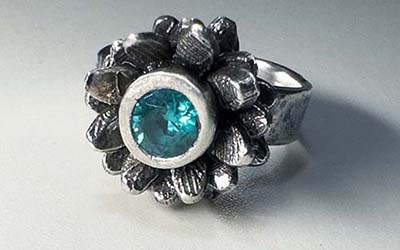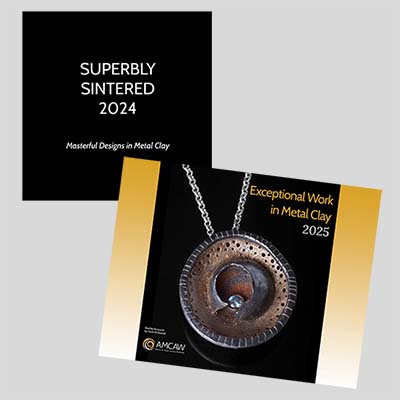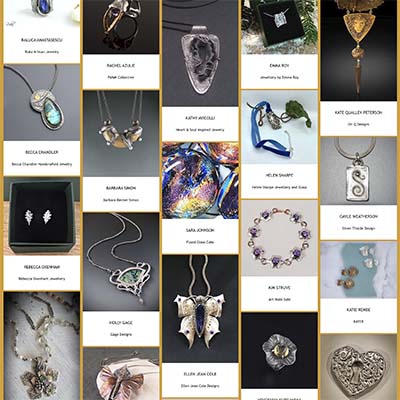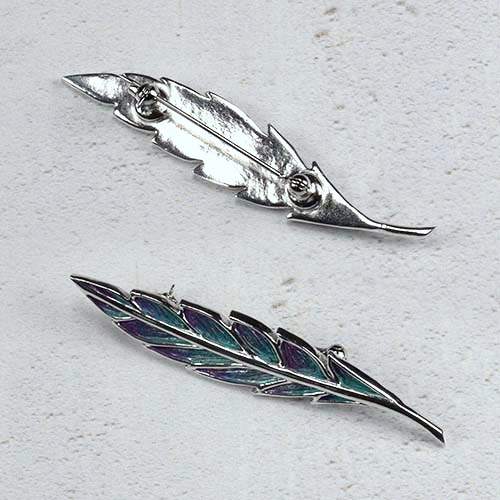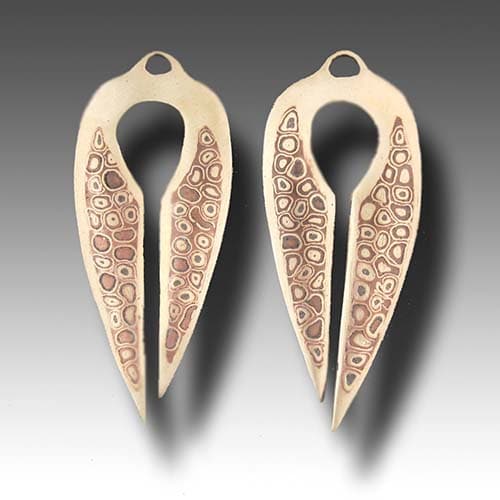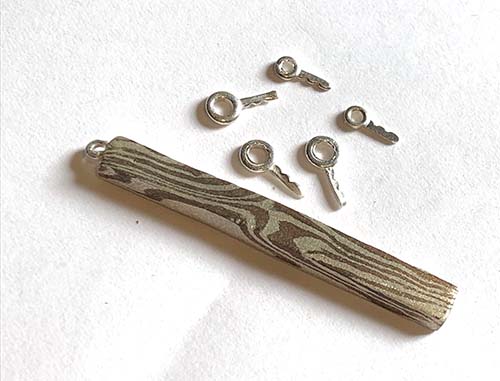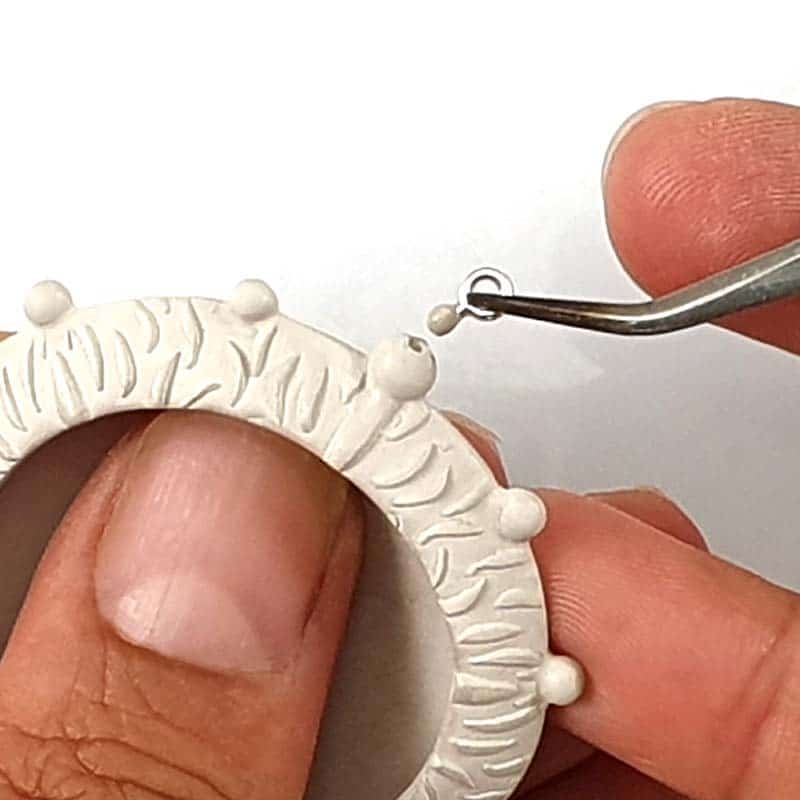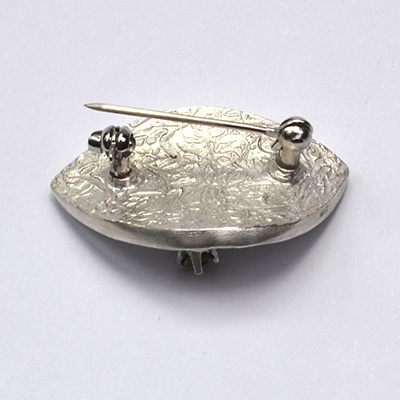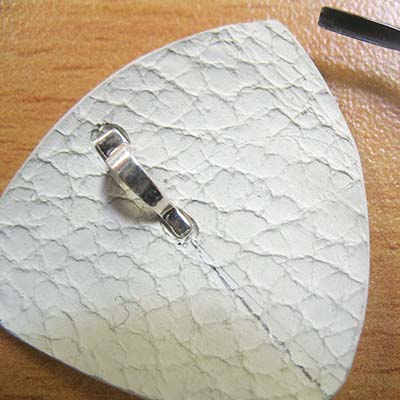Directly implanting milled or cast jewelry findings seems like the perfect way to add delicate jump rings, connectors, and stone settings to your metal clay designs, right? And it is! If you understand the science involved and make sure to follow some basic rules.
Pre-formed, commercially manufactured elements such as bezels, prong settings, bails, eyelets, or wire can all be embedded in either fresh or dry metal clay to add movement, make connections, or hold another element in place.
The great thing about metal findings is that they can be directly set in metal clay and fired in place, saving you from having to solder. They do, however, have to be carefully added to ensure they remain secure. As long as the metal type you want to embed can withstand the temperature the clay requires to sinter and won’t adversely react to the clay type, you’ll be able to use it in your piece.


